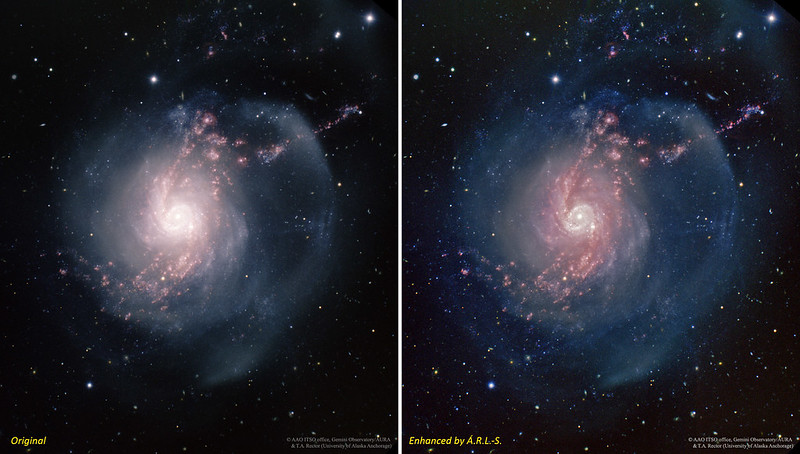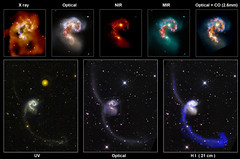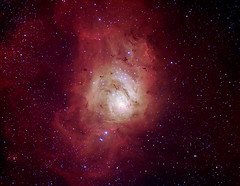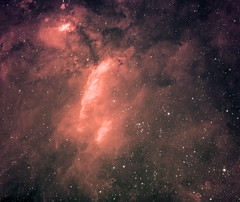I spend a lot of time with my son, Luke. He turned 3 last January and, after the terrible “terrible twos” phase he is a very different and charming little person now. He has been always obsessed with letters and numbers. Indeed he does not only know his ABC’s in Spanish and in English but he also identifies Greek letters (*). He has been doing these for around a year (the Greeks letters since Christmas). Lately he’s even writing letters by himself in his (several) blackboards or in the sand at the beach. And with numbers he’s always counting everything: pieces of food, toys, steps… I think he is starting to understand what additions and subtractions are. Yes, I do have a lot of fun playing with him (not that much when it is 10pm and he refuses to go to bed, but, ey, we’re Spanish, going to bed at 10pm is not bad seen in our native country… it must be on the genes…).
Of course I also talk about Astronomy to him. Using “glowing in the dark stars” we drew constellations in his bedroom. He now knows what “the Southern Cross“, “Orion” and “Scorpius” are, even the Pleiades (not a constellation, just a a star cluster or an asterism). A couple of weeks ago I got a small book about Astronomy for him. In only 50 pages it compiles planets, constellations, star clusters, nebulae and galaxies. It is not a book for a 3 years old, but I wanted to show him the photos of the planets. And he was fascinated about that!
Since then, every night, I have to take him to bed (as said, that usually happens later than 10pm) and read him “the story of the planets“. The book has too much text, so I just tell him funny things and curiosities about the planets. He loves it!
Yesterday, as every Sunday, it was he and me alone (and Luci, our little dog), as mum works on the weekends. It was another sunny day in Sydney, and I really wanted to go to the beach (some friends were actually meeting in Manly). But Luke didn’t want to go anywhere, he wanted to stay at home playing with the many toys and books he has. Eventually he went to his bedroom and came back to the living room bringing the book with “the story of the planets”. He wanted to play with it. Then I asked him: “do you want we make planets to put in your bedroom?“. A second after that he was just jumping and laughing, excited as crazy, “¡sí, sí, sí, papi!”.
And that was it, we took white paper and color pen markers and, following the images of the planets in the book, made our own “Solar System”:
Mercury was easy. For Venus and the Earth we used a glass and just painted with oranges-brown (Venus) or green-blue (Earth) colors. Mars was also easy just painting using red colors. I tried to add the details of the polar caps (the same that the clouds on the Earth) but our white crayon didn’t work well with the pen markers. Jupiter was fun, we used the empty box of a large yogurt (actually, that is where he has his pen markers, pencils and crayons) and just did stripes in orange colors over a yellow background to follow the Jovian bands. We added the detail of the Giant Red Spot with a red pen maker. We used a similar trick to draw Saturn (of course, this is Luke’s favorite planet) and then added the rings using a new piece of white A4 paper. Saturn’s rings were indeed the most difficult part to get, and I’m still not convinced of the result. In reality the are not that dark, and its shape is funny. We then just finished with the ice giants Uranus (pale blue with not many details on the disk) and Neptune (green-blue including some details in the clouds, and the “Great Dark Spot”).
Once this was done, Luke was really happy with “his planets”, and was counting them and naming them all the day. But I waited to the night to put them on his bedroom.
At 9pm I said “let’s go to put your planets in your bedroom, and I’ll read you the story of the planets” and he went happily to bed. We used bluetag to do this. The result is really nice, and he is so exciting about all of this!
And, yes, we didn’t make Pluto because it is not a planet. But, don’t worry, he already knows there are other things in the Solar System: the Sun, asteroids, comets and five dwarf planets (Ceres, Pluto, Eris, Haumea and Makemake), as well as many planets have also moons! We’ll eventually make many of them.
I’ll need a bigger wall…
(*) Why teaching Luke Greek letters? Well, stars are named with Greek letters (e.g., Alpha Centauri) , and I remember it took me a while to memorize that when I was a teenager. But, more importantly, Physics and Math equations are written with Greek letters. And I write many of these in his blackboards. Yes, I know, he is little, but he is absorbing everything and I’m sure it will not hurt for him to be familiar to, let say, the Newton Equations, although some times I’ve written Einstein General Relativity, Maxwell’s Equations, or Schrodinger Equation. Luke does not pay too much attention to all of that, but he loves reading the Euler Equation “e i π plus 1 equal zero”.











